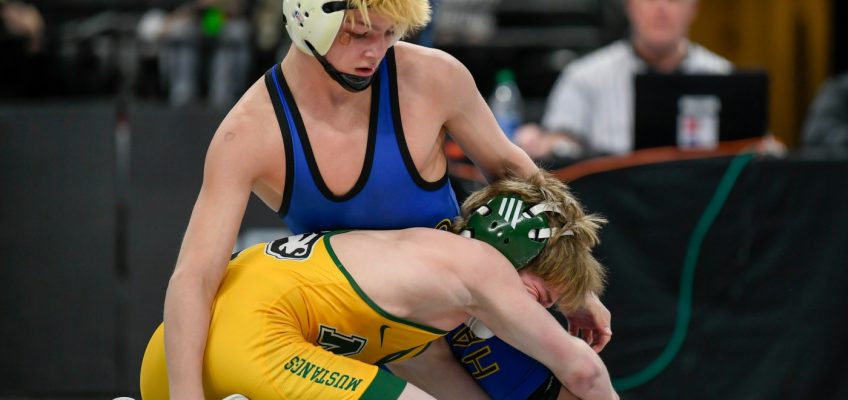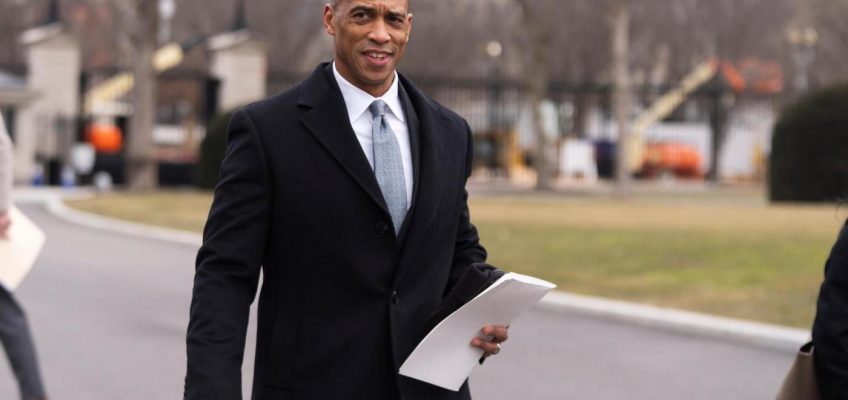The Gophers will take their 6-1 victory over the Minnesota State Mavericks, warts and all, as they stretched their winning streak to four games in the opener of their best-of-three WCHA quarterfinal playoff series Friday night at Ridder Arena.
There were far too many giveaways in their end for coach Brad Frost’s liking, but the fourth-ranked Gophers (26-9-1) used their superior skill to pull away from the Mavericks (13-20-2).
Aside from the win, the highlight of the night for the Gophers was the continued stellar play of sophomore center Emma Kreisz, who led the way with two goals and three assists. Kreisz has nine goals this season, with four of them coming in the last five games.
“I think really it’s just consistency,” Kreisz said. “And it’s not just showing up for games it’s also showing up for practices. I had a tough year with my team back home — Team Hungary — and that took a little focus away.
“But that’s over, and I’m all in. I’m focused on the here and now.”
The 5-foot-9 Kreisz, a native of Budapest, Hungary, was away for the team at the start of the new year to be with her national team trying to qualify for the Olympics. While Hungary’s attempt came up short, Kreisz was happy with the way she played, and has seen it carry over.
“It’s about getting feedback from the coaches and getting better at those areas I need to focus on,” Kreisz said. “Like using my size and taking pucks to the net, because I’m big girl, so I’ve got to use my size.”
Kreisz said she feels she is playing her best hockey right now, but added, “I think there’s more.”
Kreisz’s line — with Peyton Hemp and Ava Lindsay on the wings — scored five of the Gophers’ six goals, with Lindsay also netting a pair.
Frost has juggled his second and third lines a bit this season, but seems to have hit on something with Kreisz centering the second line and Natalie Mlynkova centering the third line between Emma Connor and Audrey Wethington.
“Last year we played a ton together,” Kreisz said. “When I came back after being gone for a few weeks I was back with them and we clicked right away. I love playing with them. We enjoy each other off the ice, too. There’s good chemistry.”
The Gophers scored the only goal of the first period, with Ava Lindsay picking up her fifth of the season at 9:08. The Gophers outshot the Mavericks 17-5 in the period.
Kreisz’s first goal of the game gave the Gophers a 2-0 lead at 1:40 of the second period. The Gophers thought they had taken a 3-0 lead at 3:25, but following a challenge by Minnesota skate the play was determined that the play was offside.
The Gophers went on their first power play of the game at 16:36 and needed just over a minute to cash in, with Kreisz redirecting a shot by Abbey Murphy past Mavericks goaltender Hailey Hansen.
The Mavericks got back in the game with a goal 14 seconds into the third period. Gophers goaltender Hannah Clark made a save on a clear breakaway at 6:43 of the period, and it proved to be a pivotal moment. The Gophers scored three times in the final five minutes.
“I’m happy with the win but not necessarily with how we played for the 60 minutes,” Frost said.
“Hannah Clark was really good tonight and gave us a chance. We pulled away at the end, so it looks like it wasn’t as close as it actually was.”
Related Articles
Women’s hockey: Murphy’s unlikely goal stands up as Gophers finish regular season with sweep of Bulldogs
Women’s hockey: Gophers keep momentum going with win over Minnesota-Duluth
Women’s hockey: Gophers beat St. Cloud State for program’s 800th win
Women’s hockey: No. 3 Gophers lose to No. 11 Huskies
Women’s hockey: Top-ranked Wisconsin rolls third-ranked Gophers
Frost’s message to the team after the game was that it will need to play much better defensively if the Gophers are to make a deep run in the postseason.
The Gophers, who won all four games against the Mavericks during the regular season, will advance to the WCHA Final Faceoff with a win over the Mavericks on Saturday.
“The odd-man rushes are in our focus,” Kreisz said. “We didn’t do a really good job. I think that’s for us to correct tomorrow. If we limit those opportunities we’re going to be just fine.”




